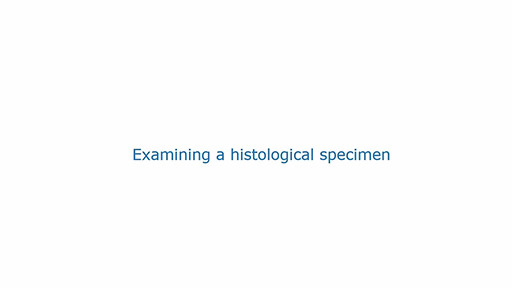2 Identifying tissues
Learn to identify different types of tissue using evidence provided by the virtual microscope.
In this video, David Male discusses how to use the virtual microscope to examine a histological specimen.
Download this video clip.Video player: 39446_ou_futurelearn_mc1008_vid_011-540.mp4


Transcript
DAVID MALE
This short video gives you some guidance on how to examine a histological specimen. You will have noticed that when a section is loaded onto the microscope, it always resets to the lowest magnification with the times 2 objective. There are a number of good reasons for starting with the lowest magnification. The first and the main reason is that it is important to get a good overview of the section before starting to examine it in detail.
Although it is tempting to jump straight to the high magnification, many structures cannot be seen at high magnification. Moreover, the critical features of a tissue may only be visible in part of the section.
Let's take the pancreas as an example. At a low magnification, the islets of Langerhans, which contain the insulin producing cells, can readily be distinguished here. But if I had started using a high magnification on the centre of the section, I would completely have missed them.
Another reason for starting with a low magnification is to see the overall arrangement of the tissue. In this section of lymph node, the developing follicles of lymphocytes can be seen distributed around the edge of the node. And the overall organisation of the tissue is clear. However, you'll see that it is quite difficult to distinguish these structures if you just scan across them at high power, even if you do so systematically as I'm doing so now. It's really a question of not being able to see the wood for the trees.
Two other practical reasons for starting with low power are, firstly, that the low power objective is further away from the slide than a high power objective, so there is less chance of damaging the slide by pushing the objective into the slide while focusing. And, secondly, that the depth of field is greater with low power objectives, so it is easier to find the approximate focus position for that particular slide.
Once you have identified an area of interest, systematically scan back and forth across it using an objective which is appropriate. For example, if you need to distinguish subcellular structures, then a high magnification is needed. But if the aim is to identify a mass of tumour cells, then the times 4 or times 10 objective might be more appropriate.
In this case, I'm going to look at the thymus for a structure called the Hassall's corpuscles. Nothing much can be distinguished on low magnification, but the distinctive structures are readily visible if you use the times 20 objective. You can see some here and here.
It is often a good idea to flip between normal tissues and an abnormal or diseased tissue. This makes it easier to identify the abnormality. Later in the course, you'll be looking at some diseased tissues and this type of systematic approach will be very helpful. Aim to develop good practice as you examine the sections.
To summarise, start with a low power objective and adjust the light if necessary. Examine the overall structure of the tissue. And identify key features or abnormalities. Use appropriate high power objectives for the structures being examined. And scan systematically.
Interactive feature not available in single page view (see it in standard view).
David emphasises how important it is to make an overall scan of the sections before focusing on specific areas and selecting an objective that can identify the features of interest in those areas.
